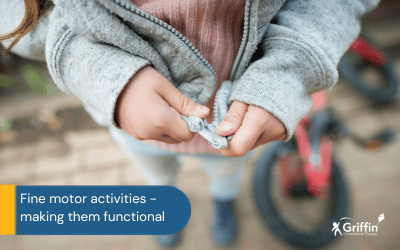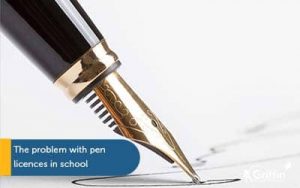Why I hate the typical fine motor skill box activities
Hate might be a strong emotion to have about such benign pieces of plastic like pegs and tweezers, however please let me explain. As an OT, fine motor skills fall into my remit. I am frequently asked to support children to develop fine motor skills. When I arrive at schools, they typically pull out their fine motor skill box. You might be familiar with it, it typically contains:
In this post I will explain why you should be thinking outside of this box!

Why I hate the typical fine motor skill box activities
Hate might be a strong emotion to have about such benign pieces of plastic like pegs and tweezers, however please let me explain. As an OT, fine motor skills fall into my remit. I am frequently asked to support children to develop fine motor skills. When I arrive at schools, they typically pull out their fine motor skill box. You might be familiar with it, it typically contains:
What’s my problem with the typical fine motor skill box?
When I consider this list, clothes pegs are the only item I see adults use. Think about it, when was the last time you used a pegboard? When was the last time you threaded beads? How about moving items between containers with tweezers? These fine motor skill activities are just not functional skills used in everyday life.
Clothes pegs are the only item you may have used recently. They are always used to hang out the washing. What is always missing from fine motor boxes is the washing, so in reality children are just pegging pegs onto a box or bowl. Excluding when you were sitting beside a child doing their fine motor box activities, when was the last time you sat and pegged clothes pegs onto a box or bowl for no reason?
I know I am being a bit facetious, but this is the reality. Many children are sitting in schools repeating tasks that they can already do. There is no progression on these fine motor activities; it is the same every day, every week and usually throughout multiple school years. To avoid this, one thing I have focussed on in my fine motor skills programme is clear goals and progression. The activities become harder in each level as the child progresses. If you need more ideas for basic skills, you can join the fine motor programme here from £25/pp/year.
The unfortunate reality is that most children doing fine motor activities spend a lot of time sitting, repeating activities they can already do, with no progression and no functional purpose.
Pegboards have a place in the fine motor activities box
I am not saying the pegboard and beads do not have a role. If children are unable to successfully put pegs into a peg board or thread beads, then these items are great resources. Pegboards help children’s hand-eye coordination and hand control when they are learning. Threading beads onto a string helps to develop two handed (bimanual) skills, speed, and accuracy. Tweezers can help with coordination and hand strength. Nuts and bolts are fantastic for two handed skills and link to being able to open water bottles and jars. Children need to learn these basic skills and they help with hand eye coordination and dexterity.
However, once children have achieved these basic skills, repeated practice serves little purpose. There is very limited, to no evidence, that repeated practice of inserting pegs into a peg board helps children to improve their scissor skills or pencil control. So many children I meet are very good at inserting pegs, but they can’t use scissors to cut out basic shapes. Their handwriting is also atrocious. This is what I mean by functional fine motor skills. Your fine motor skill box needs to have a variety of activities that get harder as the child’s skills improve. And, if you want to improve handwriting or scissors skills, you need to be practicing the actual skills.
What are functional fine motor activities?
Functional fine motor skills are the skills we use our hands for in our day-to-day life. Let’s think about some examples in a child’s life. Before school, children do up their buttons, open and close the toothpaste lid, and feed themselves breakfast. At school, they need to hold a pencil or type on a keyboard, use scissors, rulers, glue sticks and open food packets and containers. When they get home, they might want to play with Lego, do some craft or play on their game console. As they grow up, they will also need to be able to do their hair, floss their teeth and learn to use knives, vegetable peelers and graters.

Shaking up your fine motor skill box activities
I am hoping that if you have made it this far, I have convinced you that you can make some changes to your fine motor skill box. This is what I want you to do differently: once children are successful with basic fine motor activities, I want you to start challenging them. Here’s some ideas on how you can do this:
More ideas for your fine motor skill box
If this post has inspired you to look for new ideas, then I would highly recommend looking at GriffinOT’s fine motor/handwriting programme. From £25/pp/year it will revolutionise your fine motor sessions with your children. For adults, it includes training, progressive activities and step-by-step instructions which show you how to support children to complete the activities successfully. There’s printable resources and videos you can use with your children. It also includes our handwriting programme Write Rules.
I look forward to seeing you on the programme soon. In the meantime, please consider how you can make your fine motor activity sessions as functional as possible! If you need more ideas, you can check out my post – 40 functional fine motor skills.



